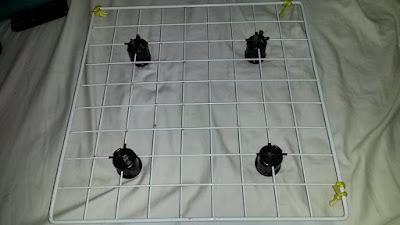Plants are fascinating creatures. We know that sunlight is best, but why? what makes sunlight superior to artificial light for growing plants? Is it magical fairy dust that falls from sunshine and rainbows? no.
Sunlight is intense, direct sunlight can be as powerful as 120,000 lumens. It also contains the entire spectrum of visible light. But do plants really need ALL of that? well, no actually. Sunlight feeds all the life on earth, plants only use a small part of that. Photosynthesis is the basis of a plants life cycle, and it happens when chlorophyll cells in the leaves absorb light and a long with water, Co2 from the air, and nutrients absorbed through the roots, produce food for the rest of the plants cells, enabling it to grow and produce new tissues, even flowers and fruit.
An interesting fact, is that photosynthesis in most plants requires only two "colors" as we know them of the light spectrum: Red and blue. (They use small amo
unts of other colors as well but the majority of the light they need is red and blue) That is why some grow lights on the market, especially LED's which can be tuned to specific wavelengths have an eerie purple glow.
This need changes through the cycle of the plant though. During the vegetative stage, that is when the sprout is new and growing only leaves, it needs more blue light. When the plant starts to bloom and produce fruit, it gradually begins to need more red light. Using only blue light will result in a short but very leafy plant, using only red light will result in a tall spindly plant... I guess. Supposedly they figured all that out in a lab somewhere. I'd love to do some experiments like that but I don't have the time or money. mostly money.
Most light bulbs are labelled as to the color of light they produce. This is known as the "white balance" or "Color temperature". This rating is displayed in degrees kelvin, or just K. It has nothing to do with actual temperature, just color. The lower the number the more red the light produced is, the higher the number the more blue light is produced.
"daylight" fluorescent bulbs usually have a rating around 6400 or 6500k. This is closer to blue and is perfect for plants in a vegetative stage. "Warm white" CFL bulbs will usually have a rating around 2700k, which is beneficial for the flowering and fruiting stage. I've found the most success using a mixture. My current setup has 3 6400k bulbs and one 2700k. I used an LED panel once, but got the best results when I placed two 6500k tubes next to it.
Now when it comes to intensity, more is always better. Unless you're at risk of burning your house down you can't have too much light. Heat will damage the plants, as will UV light, but mere brightness isn't something you should be worrying about. The amount of light a plant needs changes through its life cycle. Seedlings can be started with very little light, usually one bulb is enough, but to grow to full cycle and produce fruit requires a lot more. I would say the minimum for most plants is 5,000 lumens for vegetative growth and 10-20,000 for flowering and fruiting. Thats a minimum, so adding more lights and more intensity will show immediate results and faster growth. There are many apps for smart phones that use your phones camera to give you a light intensity readout in "lux". Lux is basically the number of lumens reaching the sensor, so hold it where you plan to have your plants and that should tell you how much light is reaching their leaves.
 |
| 60W CFL grow light, with foil tent |
The closer your plants are to the bulb, the more light they will get, and you can also help to focus the light from your bulbs using tinfoil and home-made reflectors. A few sheets of tinfoil can easily double the output of your lights. I was able to get 5,000 lumens out of only 60 watts of CFL bulbs by making a "tent" out of tinfoil and electrical tape. In another post, I'll explain how we built it and include pictures.

























